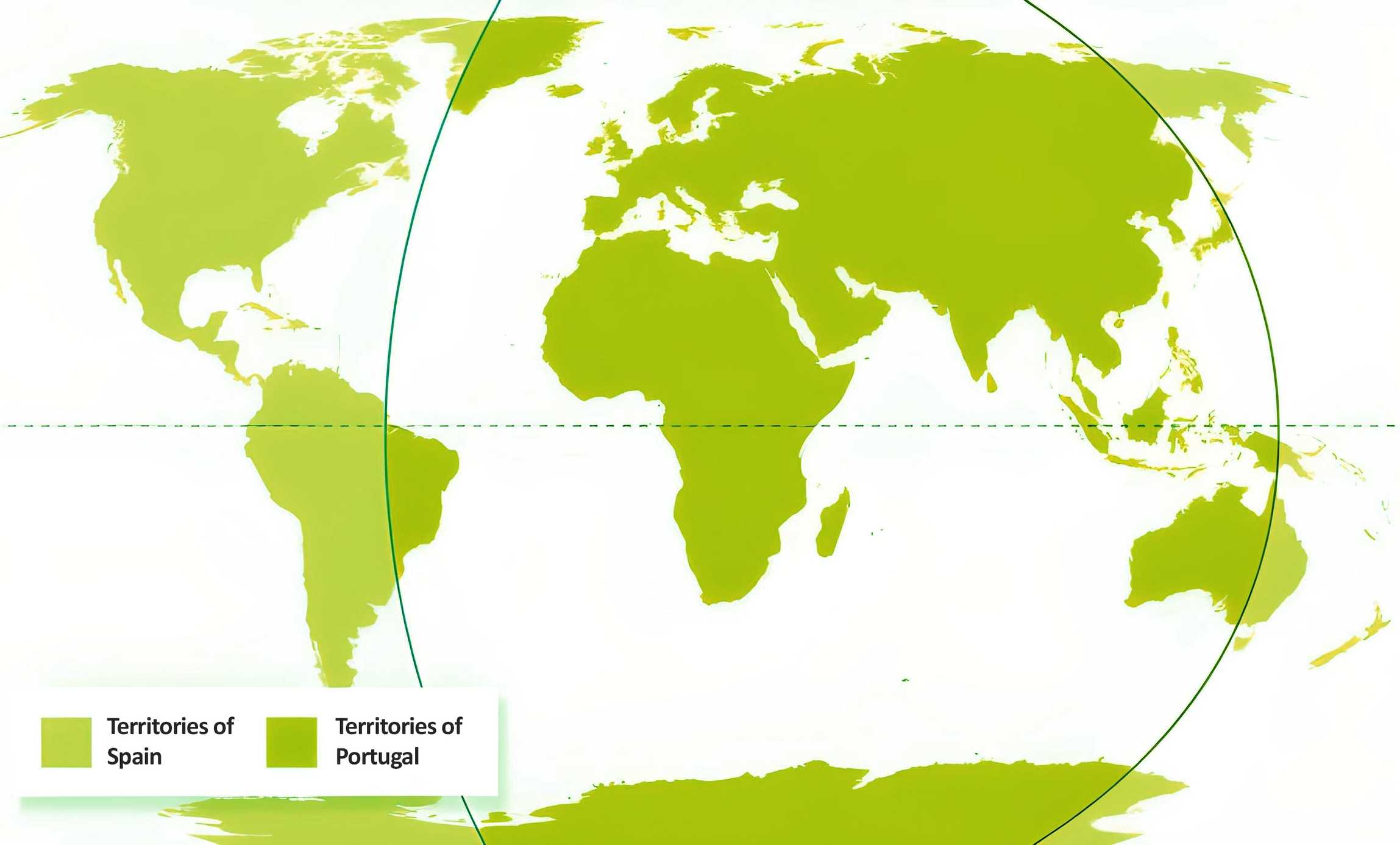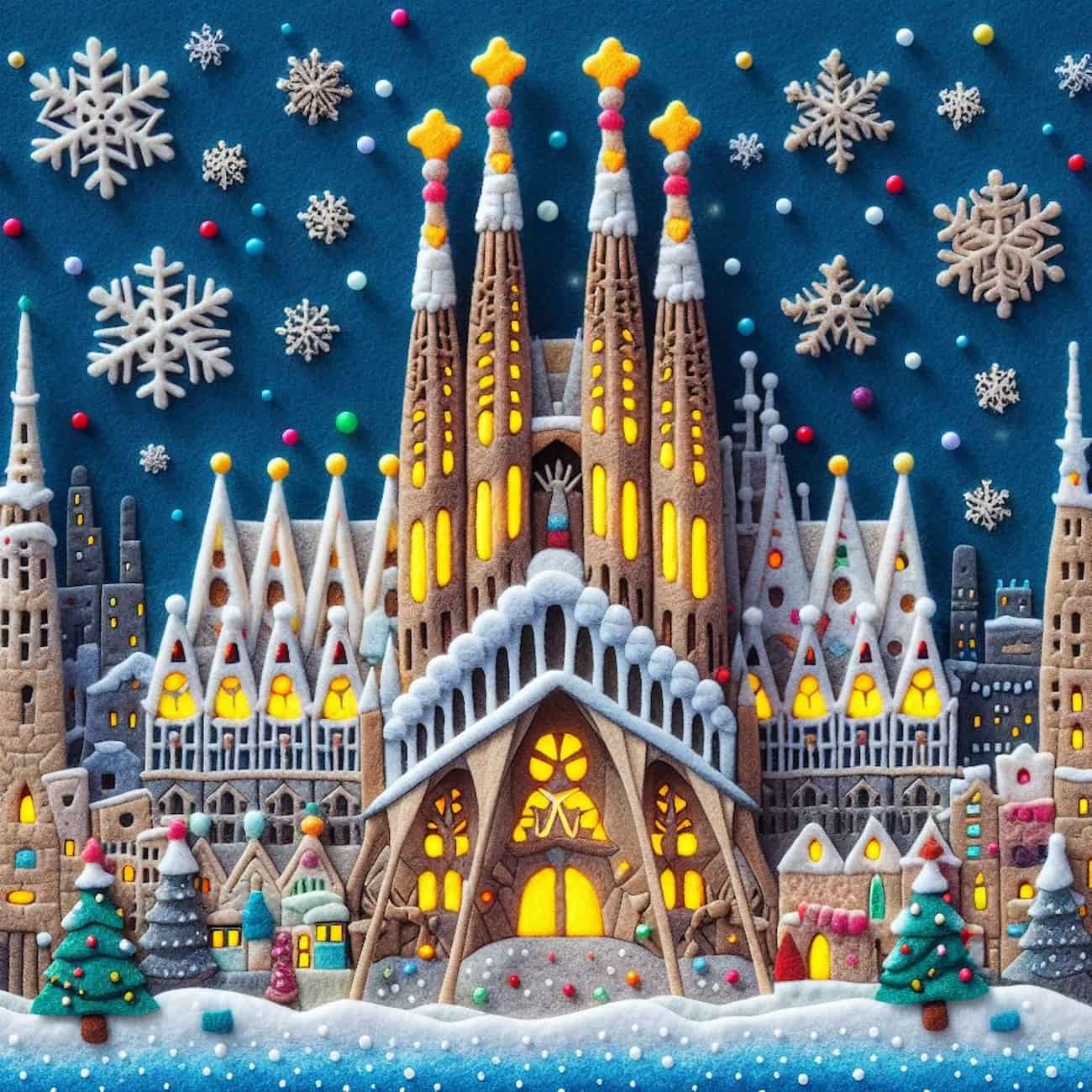Signed on June 7, 1494, the Treaty of Tordesillas established an imaginary line running across the Atlantic to the west of the Cape Verde Islands, demarcating the overseas possessions of Spain and Portugal. By this treaty, which would later be ratified by a papal bull, the Catholic Monarchs and King John II of Portugal shared the New World, which was still unexplored. Other European maritime powers were denied any rights to these new lands.
King Francis I of France would demand to see “the clause of Adam’s will that excludes him from this division.” The Native American, African, and Asian populations, however, were not consulted during the negotiation of Tordesillas…
Spain and Portugal Divide the World
As early as the mid-15th century, Portuguese navigators and explorers ventured into the Atlantic Ocean in search of a new trade route to Asia, establishing trading posts along the African coasts. The passage around the Cape of Good Hope, the gateway to the Indian Ocean, by Portuguese explorer Bartolomeu Dias in 1488 paved the way to Asia. But soon, Portugal found itself in competition with the rising power of Spain. In the 1480s and 1490s, Portugal was forced to cede its territorial claims to the Canary Islands in favor of Queen Isabella, which was formalized by the Treaty of Alcáçovas in 1479.
It was especially the discovery of the Americas by Christopher Columbus that made it urgent to establish a dividing line between the spheres of influence of the two Iberian countries. In 1493, a papal bull by Pope Alexander VI set the “demarcation” line from pole to pole 100 leagues west of the Cape Verde Islands. This was a victory for the Spanish, but the King of Portugal soon requested that this line be renegotiated. Negotiations began in May 1493 in Tordesillas, in the province of Valladolid.
The Treaty of Tordesillas

By the Treaty of Tordesillas, signed on June 7, 1494, between the Catholic Monarchs and King John II of Portugal, Spain and Portugal set the line dividing their future overseas possessions: this line, originally established by Pope Alexander VI in 1493 at 100 leagues west of the Azores and Cape Verde, was moved, at the request of the Portuguese, to 370 leagues. Any land discovered to the east of this line was to belong to Portugal; to the west, to Spain. The Treaty of Tordesillas was confirmed by Pope Julius II in 1506 (Bull Inter Caetera). Henceforth, all lands discovered to the east of this line would be Portuguese, and all territories to the west would belong to the Spanish Crown.
The treaty reserved for Portugal the most coveted trade routes, those leading to the precious spices of the East, establishing trading posts along the African coasts and in Asia. The adjustment made by Tordesillas granted Portugal rights over the American continent, where the small Iberian kingdom would establish its only settlement colony, Brazil.
On the other hand, Spain would be able to create a vast empire beginning with Mexico and Peru, rising to the rank of Europe’s leading power. The wealth from the gold and silver flowing from the Americas would finance its wars in Europe while stimulating the economy of the old continent. By 1550, Spain controlled almost all of South America, Central America, Florida, Cuba, and in Asia, the Philippines.

A Quickly Contested Treaty
By the 16th century, the two nations began to make breaches in the Treaty of Tordesillas. The Portuguese colony of Brazil expanded far beyond the demarcation line, and in Asia, Spain seized the Philippines and Ternate, which were supposed to be within the Portuguese sphere of influence. The demarcation line and all associated agreements were abolished in 1750 by a treaty settling a conflict regarding the southwestern border of Brazil. The 1750 treaty was itself abrogated in 1761, and new disagreements between the two countries were settled by another treaty in 1779.
The northern European maritime nations (England, France, and the Netherlands) paid little attention to the various treaties signed by Spain with the papacy and Portugal, and from 1520 onward, their merchant ships increasingly entered the Caribbean Sea, supplying the major islands with African slaves. In the 17th century, as Portugal and Spain declined, they could only watch helplessly as new colonial empires emerged within their spheres of influence defined by the Treaty of Tordesillas.
Treaty of Tordesillas (1494) at a Glance
Is the Treaty of Tordesillas still in effect today?
The Treaty of Tordesillas is no longer in effect, as it was superseded by subsequent treaties and agreements that shaped the geopolitical landscape in the centuries following its signing. However, its historical significance in shaping early European colonial expansion remains noteworthy.
What were the long-term consequences of the Treaty?
The Treaty of Tordesillas had significant long-term consequences for the division of colonial territories. It established Spain and Portugal as major colonial powers and laid the groundwork for their respective overseas empires.
How did the Treaty impact indigenous peoples?
The Treaty of Tordesillas did not consider the rights of indigenous peoples in the New World. As European colonization progressed, indigenous populations were often subjected to exploitation, forced labor, and cultural assimilation.
What led to the signing of the Treaty of Tordesillas?
The signing of the Treaty was prompted by the 1493 papal bull, Inter caetera, issued by Pope Alexander VI. This papal bull divided the newly discovered lands outside Europe between Spain and Portugal along a meridian line, giving each empire exclusive rights to claim and colonize territories on their respective sides.
What was the purpose of the Line of Demarcation in the Treaty?
The Line of Demarcation was a key element of the Treaty of Tordesillas. It was an imaginary line drawn north to south on a map, approximately 370 leagues west of the Cape Verde Islands. Lands discovered to the west of this line would belong to Spain, while those to the east would belong to Portugal.
Bibliography
- Roland Chardon, “The linear league in North America“, (1980).
- Horst Pietschmann, Atlantic history: history of the Atlantic System 1580–1830, (2002).






